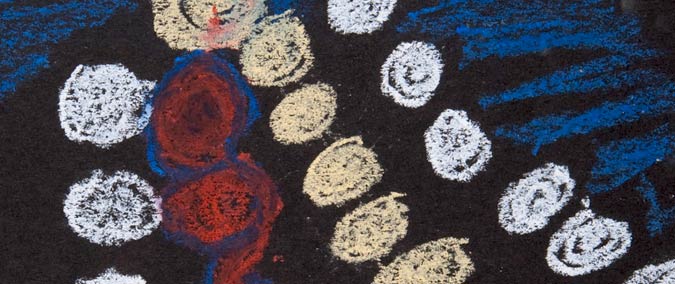Light is used as a symbol by cultures and religions all over the world, representing goodness, love, truth, knowledge, faith and life itself. In Hinduism, it is particularly celebrated with lamps and fireworks during Diwali, the ‘Festival of Lights’. It is also a central feature in Christian rituals, and has become an expressive medium for many Western European artists.
Exhibition insight
Transcript
Presenter: The performance starts with a prayer to Lord Ganesh, the deity of auspicious occasions and beginnings. All Hindus pray to Lord Ganesh before important tasks and occasions.
Sita is introduced, covered by a veil. In old Hindu traditions a veil was used to hide the bride because in the old days the bride and groom would meet for the first time on their wedding day. The veil would only be removed after the bride was in the wedding marquee.
Here we see Sita offering flowers and praying to god to help her find a husband. Sita’s father, King Janak, sets a task to find her suitor: the man who can lift the very heavy bow that Sita played with as a child shall marry his daughter. Sita’s prayers are answered when Ram comes and accomplishes the task.
Ram passes the test by picking up the bow and stringing it. Sita’s father was very impressed. Sita sees Ram as her suitor, who will be the perfect husband. In this scene you see Ram and Sita put garlands around each other to symbolise their marriage. This ritual is still performed in Hindu marriages across the world.
Ram and Sita arrive back to their kingdom of Ayodhya, where the streets and villages are filled with little oil lamps called divas. Divas light a path from bad to good and symbolise the fact that good has triumphed over evil. The performance ends with everyone dancing and joyful in celebration because the great prince Ram has finally arrived home to be crowned the King of Ayodhya. This is the day of Diwali.
Find out more about Festival of Light celebrations at the National Gallery
In 2008 the National Gallery produced the Festival of Light trail ,exploring the use of light in different traditions. The trail takes seven National Gallery paintings as a starting point.
Diwali 2008
As part of Diwali celebrations in 2008, the Anapurna Dance Company performed a series of dances responding to National Gallery paintings. A short film from this performance is included in the exhibition.
National Gallery Education has extended the discussion and sharing of cultures which the celebrations and trail inspired, running a wide range of learning and creativity projects. This exhibition presents some of the work produced by participants of all ages and experiences.
Whether they were drawing, painting, writing or making prints, people often expressed their pleasure and strong sense of achievement. They join around 210,000 others who take part in learning and creativity sessions run by National Gallery Education every year, many of which are free of charge.

